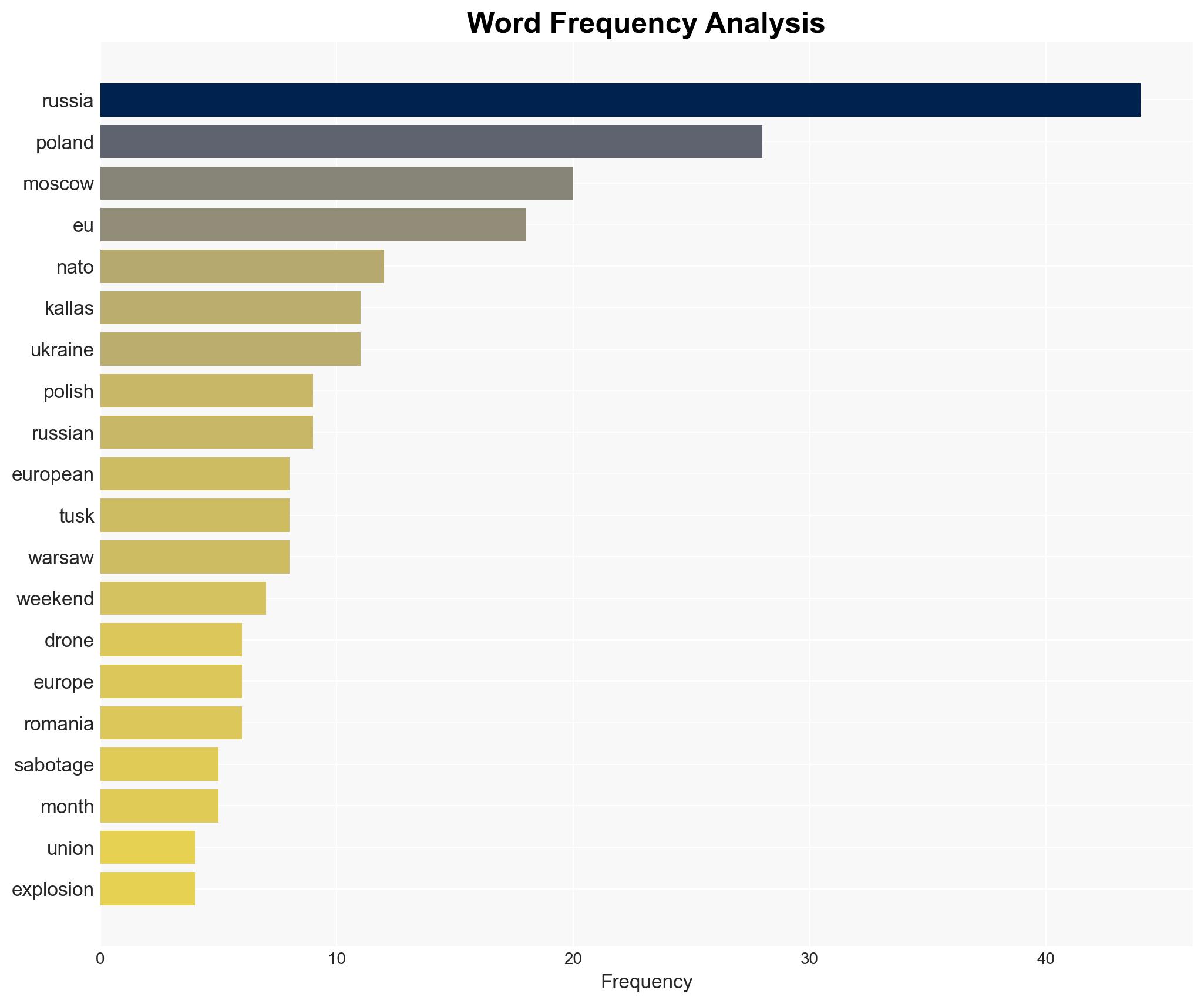Russia Attacks on EU Are State-Sponsored Terrorism Top Diplomat Says – Insurance Journal
Published on: 2025-11-19
AI-powered OSINT brief from verified open sources. Automated NLP signal extraction with human verification. See our Methodology and Why WorldWideWatchers.
Intelligence Report:
1. BLUF (Bottom Line Up Front)
The most supported hypothesis is that the recent attacks in Poland, attributed to Russia, are part of a broader strategy of hybrid warfare aimed at destabilizing the EU and undermining support for Ukraine. Confidence level: Moderate. Recommended action includes strengthening EU-NATO coordination on hybrid threat response and enhancing cyber and infrastructure security measures.
2. Competing Hypotheses
Hypothesis 1: The attacks in Poland are state-sponsored acts of terrorism by Russia, intended to destabilize the EU and disrupt support for Ukraine. This hypothesis is supported by the pattern of hybrid warfare tactics previously attributed to Russia, including cyberattacks, misinformation, and sabotage.
Hypothesis 2: The incidents are isolated acts of sabotage by non-state actors or rogue elements, possibly with indirect Russian support or encouragement. This hypothesis considers the possibility of opportunistic actions by groups seeking to exploit the current geopolitical tensions.
Hypothesis 1 is more likely due to the consistent pattern of hybrid activities attributed to Russia, the strategic importance of the targeted infrastructure, and the timing aligned with EU sanctions and support for Ukraine.
3. Key Assumptions and Red Flags
Assumptions include the reliability of intelligence linking the attacks to Russian state actors and the effectiveness of EU sanctions in provoking a Russian response. Red flags involve potential biases in attributing blame to Russia without conclusive evidence and the risk of misinterpretation of isolated incidents as coordinated state actions. Deception indicators include Russian denials and accusations of Russophobia, which could be attempts to deflect blame and sow discord within the EU.
4. Implications and Strategic Risks
The attacks could escalate tensions between the EU and Russia, leading to increased military readiness and potential retaliatory measures. Cyber and misinformation campaigns may intensify, targeting EU unity and public opinion. Economic impacts could arise from disrupted supply chains and increased security costs. Politically, there is a risk of fracturing EU consensus on sanctions and support for Ukraine.
5. Recommendations and Outlook
- Enhance EU-NATO coordination on hybrid threat detection and response.
- Strengthen cyber defenses and infrastructure security across the EU, particularly in border regions.
- Increase intelligence sharing among EU member states to improve situational awareness and response capabilities.
- Best-case scenario: The EU successfully deters further attacks through coordinated security measures and diplomatic pressure.
- Worst-case scenario: Escalation leads to direct confrontation between Russia and NATO forces.
- Most-likely scenario: Continued hybrid warfare tactics by Russia, with periodic incidents aimed at testing EU resilience and resolve.
6. Key Individuals and Entities
Kaja Kallas, Donald Tusk, Dmitry Peskov.
7. Thematic Tags
Structured Analytic Techniques Applied
- Cognitive Bias Stress Test: Expose and correct potential biases in assessments through red-teaming and structured challenge.
- Bayesian Scenario Modeling: Use probabilistic forecasting for conflict trajectories or escalation likelihood.
- Network Influence Mapping: Map relationships between state and non-state actors for impact estimation.
Explore more:
National Security Threats Briefs ·
Daily Summary ·
Support us





